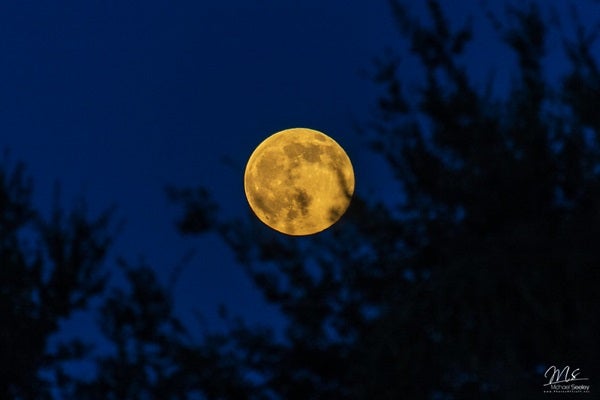
The jet of high-energy material escaping from the core of the giant elliptical galaxy M87 could be the cause of the increased number of stellar explosions that astronomers are observing. Credit: NASA/Hubble Heritage Team (STScI/AURA)
Supernovae, the violent explosions that occur when stars die, normally occur sporadically within galaxies. However, by shifting the angle of the Hubble Space Telescope’s line of sight toward M87, astronomers recently spotted double the expected amount of supernovae along a massive 3,000 light-year-long jet exiting the supermassive black hole at the center of the galaxy.
Researchers have noticed strange behavior occurring near the center of M87, a giant elliptical galaxy in the constellation Virgo, since Hubble was launched in 1990. Unfortunately, the camera’s field of view was too narrow to inspect what was going on. It wasn’t until Hubble devoted 9 months of observation with its new wide-field cameras that the image became much clearer.
However, not all the answers behind this phenomenon are yet known.
Double the trouble
In 2007, a team of astronomers analyzed M87 using Hubble data and found 13 supernovae – or more specifically, classical novae. These events occur not when a massive star dies, but in a binary system when a white dwarf is fed hydrogen (and sometimes even helium) from its companion star, until a critical point is reached and the outer layer of the white dwarf suffers an out-of-control nuclear explosion. reaction and is expelled with a bright flash of light that lasts from days to years. This team was among the first to suggest that the jet influenced these explosions.
This year’s study, which has been accepted for publication on Astrophysics Journalused two Hubble surveys and observed 135 classical novae clustered around M87’s hot plasma jet. This count is double what is considered normal for the rest of the galaxy. “We are witnessing an intriguing but disconcerting phenomenon,” ESA researcher Chiara Circosta, who was not involved in the study, said in a press release.
The team proposes three scenarios that could cause this increase in eruptions. The first suggests that the proximity of the jet and binary systems is allowing hydrogen to bombard the white dwarfs, essentially causing them to eject their outer layers much faster. The second scenario suggests that the pressure of the jet’s intense light is doubling the rate of mass transfer of material from the companion star to the white dwarfs. And finally, it’s possible that the jet’s immense radiation is heating the companion star, causing it to “spill over” and hurl hydrogen onto the white dwarfs. However, this third possibility is not as favored as the first two, as this type of heating should not be enough to cause all these extra novae.
Astronomers have yet to define the reason behind this strange increase in clustered classical novae along M87’s jet, but confirming the increased rate is a critical first step. Now, researchers will have to wait for future Hubble observations, as it is the only space observatory – for now – capable of resolving these novae against the bright background of the galaxy.

